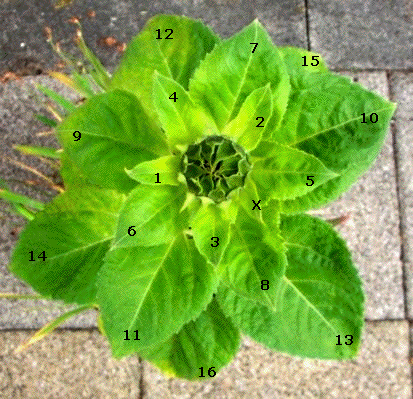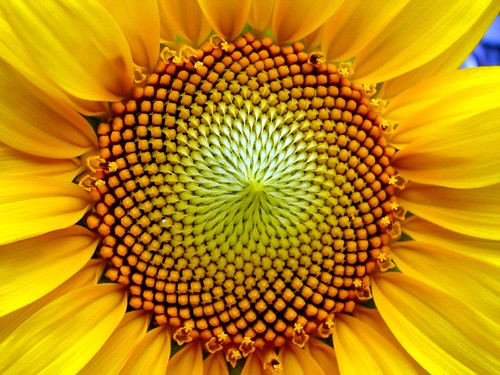
Source: http://blog.the-market-toolbox.com
To play music, we use our fingers, and the size of their joints actually forms a mathematical pattern called a “Fibonacci Sequence”.
Leonardo Fibonacci, was born in the 12th century, and studied a sequence of numbers with a special type of rule for determining the next number in the sequence.
He began the sequence with 0,1, … and then calculated each successive number from the sum of the previous two. ( Eg. 0+1=2, 1+2=3, 2+3=5, 3+5=8, etc)
This sequence of numbers is called the Fibonacci Numbers or Fibonacci Sequence.
The Fibonacci numbers are interesting in that they occur throughout both Nature, Art, Engineering, and Music.
Here are the first few numbers of the sequence:
0, 1, 1, 2, 3, 5, 8, 13, 21, 34, 55, 89, ……
The ratios of these successive numbers leads to interesting spiral patterns that are found in nature:

Image Source: http://ps2pm.files.wordpress.com

Image Source: http://www.onlineinvestingai.com

Image Source: http://www.maths.surrey.ac.uk

Image Source: http://www.creationresearches.com

Source: http://farm1.static.flickr.com
Nature is indeed beautiful, but our main interest here is the maths in music.
The Fibonacci Numbers amazingly form the foundation of music.
The first numbers of the Fibonacci Series (after 0,1) are: 1, 2, 3, 5, 8, 13
There are 13 notes in the span of any note through to its octave.
Eg. For the Octave of C on the piano keyboard shown above, there are
thirteen notes in total : 8 white keys and 5 black keys.
However to play the “scale” of C, we only play the 8 white keys.
- A scale is comprised of 8 notes, of which the 5th and 3rd notes create the basic foundation of all chords.
- We also have harmonising intervals of 3rds and 5ths.
- To produce a “third” we play the first note and a note 2 tones higher than this note.
- To play an Octave we play the first note, and then a another note 8 tones higher.
Note in all of the above, (which is the basis of music), all of the notes and intervals only use the Fibonacci Numbers 1, 2, 3, 5, 8, and 13.
The series can also be used when composing music to make patterns of notes that are pleasing to the ear. It is claimed that classical composers like Mozart and Bartok used the Fibonacci series in some of their pieces.
For a more in depth look at mathematical symmetries in Music, including use of the Fibonacci Sequence, check out the following excellent webpage from the “Mathematical Institute of the Serbian Academy of Sciences and Arts”.
http://www.mi.sanu.ac.rs/vismath/jadrbookhtml/part42.html
Has the Fibonacci Series ever been used in Rock Music ?
Yes of course it has! Power Chords are actually 5ths intervals, Triad chords use 1,3,and 5, Octaves use 8ths: these are all Fibonacci numbers !
Slideshare Presentation About Music Math
The following Slideshare presentation is all about the Fibonacci Sequence, including the Golden Ratio, in nature as well as music.
[slideshare id=1798646&doc=goldenmusic3-090801102457-phpapp01]
If you have an Apple device which is not displaying this slideshow properly, then click the following link:
http://www.slideshare.net/rubiz/golden-music
Music Math Videos
Here is a fun outdoor piano that was built in Sweden. People were able to do their own experiments with different sequences of the Fibonacci based notes. The results were very entertaining.
[youtube=http://www.youtube.com/watch?v=2lXh2n0aPyw&w=500&h=304]
Here is some music and images, that are not Fibonacci Sequences, but instead involve “Fractals”, which are another type of really interesting mathematical pattern. The following chillout video is a Montage of “Mandelbrot” and “Julia” Sets.
[youtube=http://www.youtube.com/watch?v=LPW1xgPrdyA&w=500&h=405]
Related Items
AFL Ground Sizes
AFL Football GPS
AFL Football Statistics
Drag Racing Integers
eBay Math Problem
Guitar Mathematics
Interesting Circles
Interesting Percentages
Jobs that use Geometry
Mathematics of Aircraft and Train Disasters
My Virtual Home – Area and Perimeter
Off Road Motorcycling Algebra and Statistics
Real World Integers
Real World Straight Line Graphs I
Real World Straight Line Graphs II
Real World Charts and Graphs
Tall Buildings
Tsunami Mathematics
Weight Training and Percentages
If you enjoyed this post, why not get a free subscription to our website.
You can then receive notifications of new pages directly to your email address.
Go to the subscribe area on the right hand sidebar, fill in your email address and then click the “Subscribe” button.
To find out exactly how free subscription works, click the following link:
If you would like to submit an idea for an article, or be a guest writer on our blog, then please email us at the hotmail address shown in the right hand side bar of this page.
Enjoy,
Passy




Dear Passy, I am planning a post on using the Fibonacci number series in a music composition; do you mind if I link to your excellent post on this?
No Problem, Go For It!
Pingback: Off-Road Algebra | Passy's World of Mathematics
Pingback: Fibonacci Sequence in Music | Passy's World of Mathematics
Pingback: Introduction to Ratios | Passy's World of Mathematics
Pingback: Simplifying Ratios | Passy's World of Mathematics
Pingback: Finding Ratio Amounts of Proportions | Passy's World of Mathematics
Pingback: Increasing and Decreasing Using Ratios | Passy's World of Mathematics
Pingback: Guitar Mathematics | Passy's World of Mathematics
Pingback: Mathematics of the Melbourne Cup | Passy's World of Mathematics
Pingback: Tsunami Mathematics | Passy's World of Mathematics